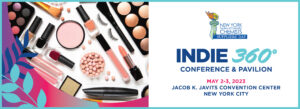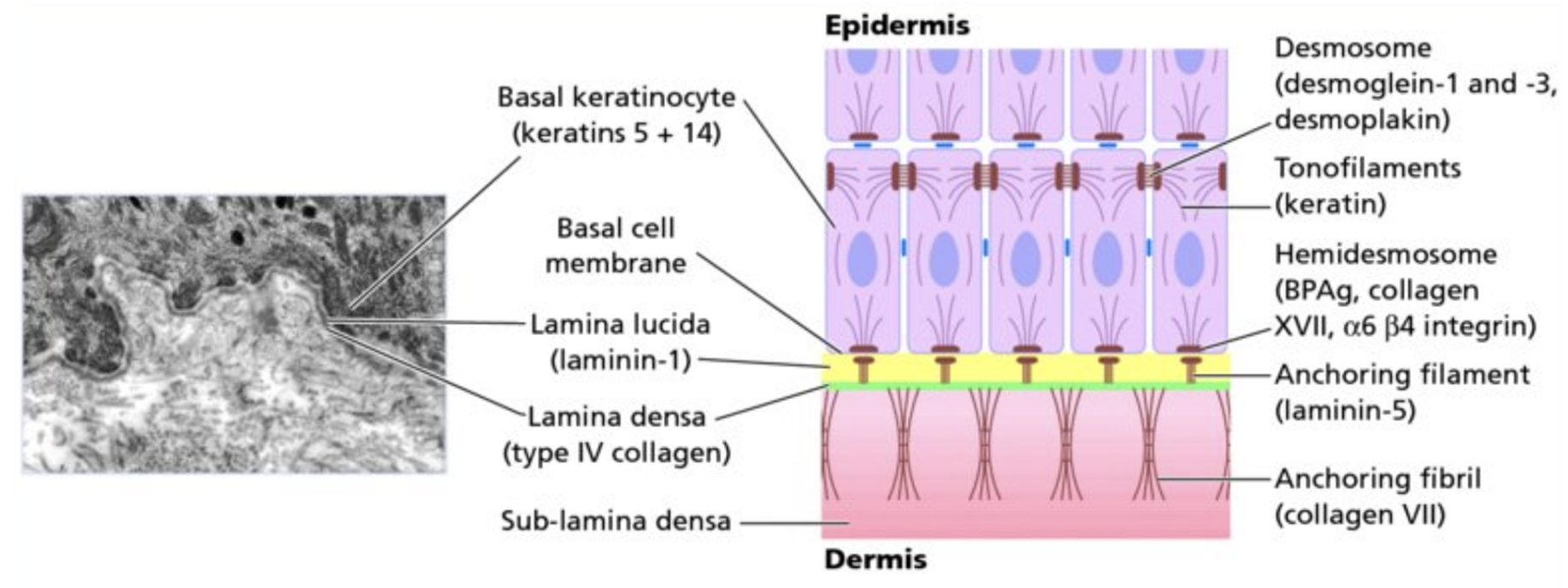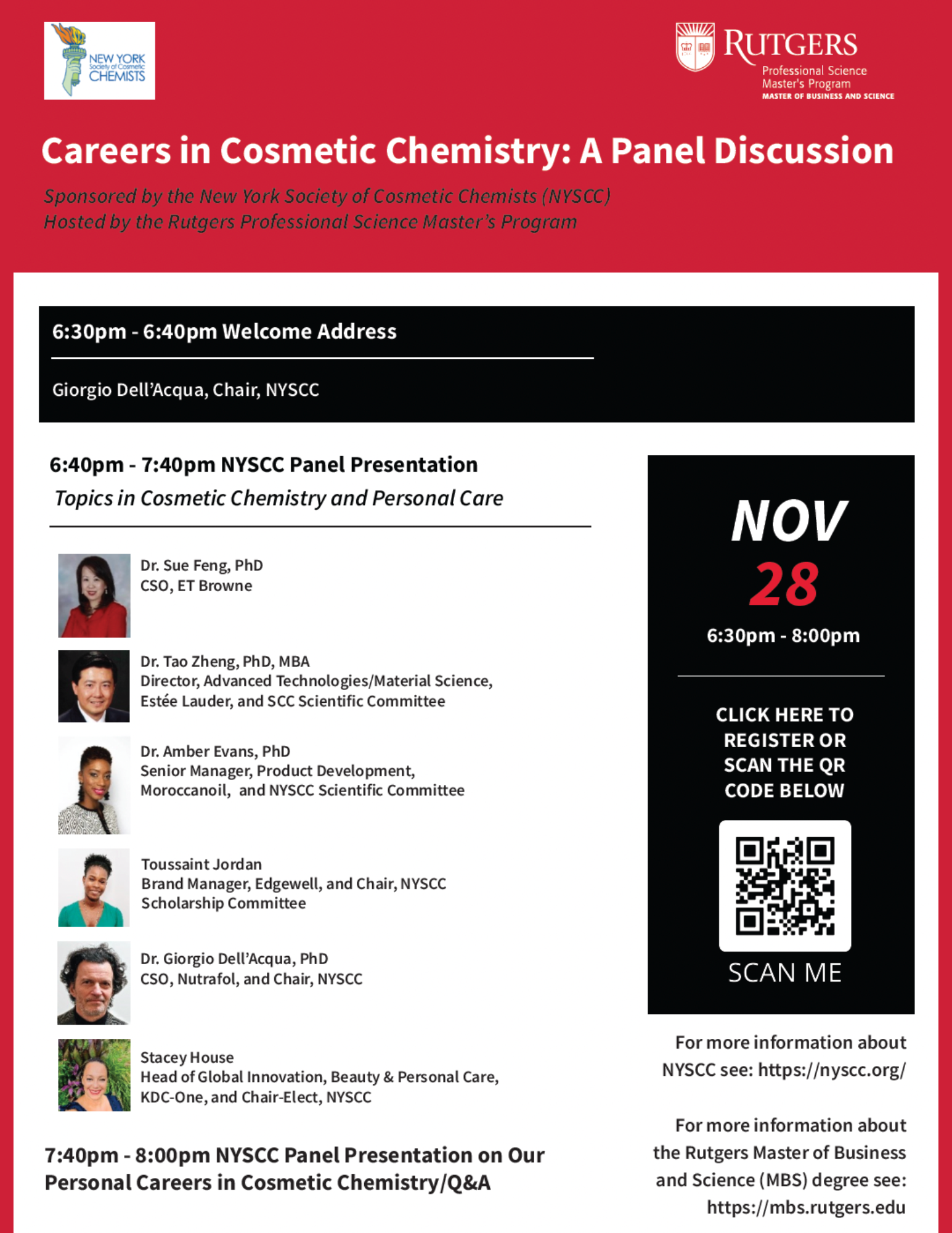Media Contact: Annie Scully, 201-310-9252, press@nyscc.org
NYSCC Suppliers’ Day–Education & Innovation at Forefront of Leading Ingredients & Formulation Event
Reimagining Renewal & Wellness at Beauty & Personal Care Trade Show and Conference, May 2-3, at the Javits Center in New York City
(New York, New York, April 2023)—The New York Society of Cosmetic Chemists (NYSCC) announces its educational program for Suppliers’ Day, taking place May 2-3, at the Jacob Javits Convention Center in New York City. As North America’s most important ingredients and formulation event, Suppliers’ Day will provide the latest trends, scientific findings, global ingredients, raw materials and solutions that will invigorate and accelerate beauty and personal care product developments.
Curated by the NYSCC Scientific Committee, along with support from media and industry association partners, Suppliers’ Day will offer close to 100 hours of educational programming on the topics that are most pressing to those involved in formulations, sourcing, and marketing beauty and personal care products including:
-Fireside Chat on green sciences, sustainability and more with a leading global beauty manufacturer
-Technical courses spearheaded by the NYSCC Scientific Advisory Committee that take deep dives into: Hair & Scalp Renewal & Wellness and Biotechnology in Beauty & Personal Care
-Digital Age of Beauty focusing on key strategies, digital tools and innovative technologies that influence product development, and speed to market including AI and blockchain.
-Microbiome: Inside Out Beauty, with expert perspectives and unique insight on microbiome health from head to toe including oral and vaginal innovations.
– PCPC along with the EU’s IKW presenting: Reimagining, Renewal, & Wellness: Modernizing Cosmetics Regulations.
–INDIE 360 covering every angle of launching and sustaining a brand and featuring a panel of founders sharing their stories including the challenges, opportunities and journeys to success.
-Two lunch and learns sponsored by industry partners covering Natural Ingredients, More Tech and Science Needed: A Discussion with the Experts and “Catching China’s Beauty Trends.”
-Fragrance: The Invisible Art is also returning to Suppliers’ Day and brings together expert perspectives from the essential players in creating the “invisible art”.
-Popular program tracks, opened to all attendees, will focus on green issues and reducing waste with Discover Sustainability, global sourcing and marketing trends from World of Chemistry; IBA’s Regulatory & Compliance Update; Innovations from the Exhibit Floor; and “Hot Topics” offering lightning sessions on oral care, DE&I, color, influencers, legal watch outs, and sustainable packaging.
-For the first time there will be a Influencer Chemist Panel: TRUTH IN BEAUTY
featuring The Eco Well, Chemist Confessions, NYSCC’s Influencer, Javon Ford and more.
-Pre-event SCC CEP Courses on Formulating Natural Oils and Butters for the Cosmetics Industry: Technical Background and Best Practices and Introduction to Sensory Characterization of Cosmetic Emulsions.
“The theme, Reimagining Renewal & Wellness, will be evident throughout Suppliers’ Day by focusing on all elements that foster renewal and will shine a light on sustainable beauty,” said Stacey House, Chair, NYSCC. “The event will bridge how wellness, and eco-consciousness touches all areas of the industry and impacts new product development and business success.”
Continuing its mission to educate and involve the workforce of the future and students, Suppliers’ Day will also host the popular Future Chemists Workshop and hold a Mentor Lunch Mixer and Career Development Session.
The finalists of the CEW Supplier’s Beauty Creators Award for Ingredients & Formulation will be revealed at the NYSCC Industry Awards Night celebration on May 2nd at Second Floor NYC.
The expanded show floor will feature more than 500 global exhibitors showcasing novel ingredients, formulas, processing, advanced scientific testing equipment and more. Dynamic areas on the show floor will provide an enhanced educational and wellness experience including the new Brazilian and Peru Pavilions, Re-Charge Station, Main Stage, Presentation Theater, Influencers Lounge, Future Chemists Workshop, University Row, Technical Poster Presentations Showcase, and an Indie Pavilion with 16+ juried brands.
Suppliers’ Day is the NYSCC flagship event and attracts participants working in R&D and product development for the biggest brand manufacturers in beauty and personal care as well as emerging independents. To register to attend and for more information on NYSCC Suppliers’ Day visit: https://nyscc.org/suppliers-day/.
###
About New York Society of Cosmetic Chemists (NYSCC)
Dedicated to the advancement of cosmetic science, the New York Society of Cosmetic Chemists strives to increase and disseminate scientific information through meetings and publications. By promoting research in cosmetic science and industry, and by setting high ethical, professional and educational standards, we reach our goal of improving the qualifications of cosmetic scientists. Our mission is to further the interests and recognition of cosmetic scientists while maintaining the confidence of the public in the cosmetic and toiletries industry. The NYSCC Suppliers’ Day in New York City, is the leading North American event for beauty ingredients, formulations, and delivery innovations. For more information visit: www.nyscc.org, Connect with NYSCC on Twitter and Facebook at @NYSCC and Instagram: @NYSCCMAIN





 Image Source: Kynan T. Lawlor, Pritinder Kaur: International Journal of Molecular Sciences 16 (12):28098-28107
Image Source: Kynan T. Lawlor, Pritinder Kaur: International Journal of Molecular Sciences 16 (12):28098-28107 Marc Cornell, BS. is a consultant at Mar-key Consulting LLC where he services the consumer product industry with innovative product development concepts.
Marc Cornell, BS. is a consultant at Mar-key Consulting LLC where he services the consumer product industry with innovative product development concepts.